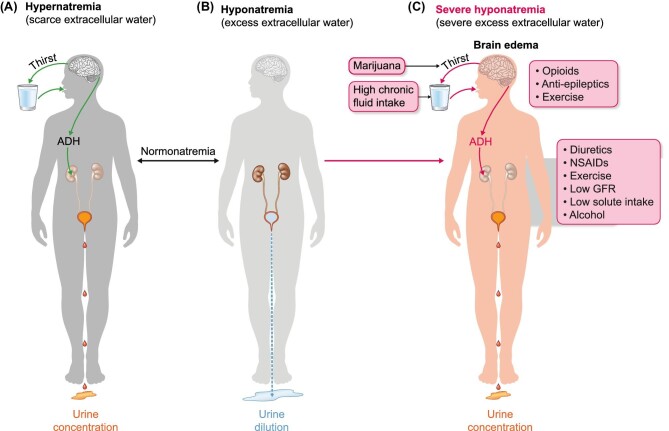FIGURE 1:
Water balance homeostasis and Bruce Lee's risk factors for hyponatraemia. Hypernatraemia means that there is a deficiency in extracellular water and the body adapts by increasing water intake through thirst and decreasing water loss in urine by secreting antidiuretic hormone (ADH), which results in more a concentrated, lower amount of urine (A). If hyponatraemia develops, these mechanisms will be shut down, resulting in an increased volume of more dilute urine (B). Severe hyponatraemia may result from failure to timely shut down mechanisms that increase water intake and decrease water excretion once hyponatraemia has developed (C). Severe hyponatraemia may trigger cerebral oedema and herniation through the foramen magnum in the occipital bone of the skull, resulting in death within hours. Green arrows indicate adaptive mechanisms. Red arrows indicate mechanisms that are inappropriately activated and not in line with physiological needs to maintain water homeostasis. Lee had several risk factors for severe hyponatraemia that interfered with all levels of control of water balance, from thirst to ADH secretion to ADH action in the kidneys to decrease water excretion in urine.

